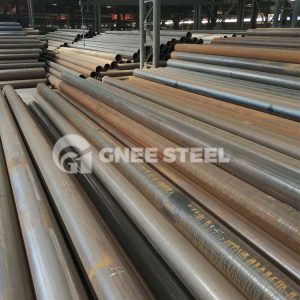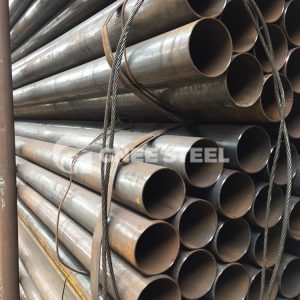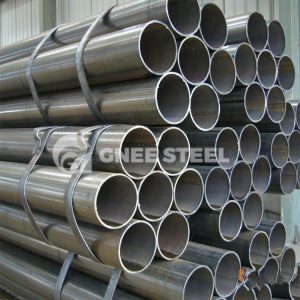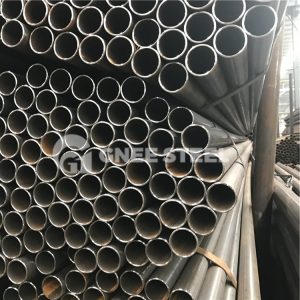The difference between high-frequency welded pipe and ordinary welded pipe lies in: different welding methods, different strength of welded pipe, different cost of three aspects, high-frequency welded pipe and ordinary welded pipe belongs to the straight-seam welded pipe, the biggest difference lies in the production process and the way is different.
First, the difference between high-frequency welded pipe and ordinary welded pipe welding method
Ordinary welded pipe is mainly made of steel plate as raw materials, after bending and welding, and high-frequency welded pipe is the use of strip steel or coil plate as raw materials made of high-frequency welded pipe, generally 325 calibre below the pipe more than the use of strip steel as raw materials, 325-660 calibre of the pipe more than the use of coil plate as raw materials, the strip steel is extruded through the high temperature and the extrusion of the external force to form a u-shaped open mouth of the round fine-rolled tube, and finally the use of high-frequency electric current of the set of skin, Neighbourhood effect of high-frequency current is used to melt the edge of the steel pipe welding.


Second, high-frequency welded pipe and ordinary welded pipe strength difference
High-frequency welded pipe strength than ordinary welded pipe to be higher, the same width of raw materials can produce different pipe diameter specifications of the welded pipe, and in the narrower raw materials can also produce a larger diameter of the welded pipe, compared with the same length of the straight seam welded pipe, the weld seam increased by 30 per cent to one hundred per cent of the length of the pipe, the steel pipe strength is higher.


Third, the cost difference between high-frequency welded pipe and ordinary welded pipe
High-frequency welded pipe and ordinary welded pipe have the advantages of low cost, high efficiency, continuity, from the production point of view, high-frequency welded pipe production does not produce exhaust gas and wastewater, low noise, no pollution, environmental protection and reduce procurement costs.